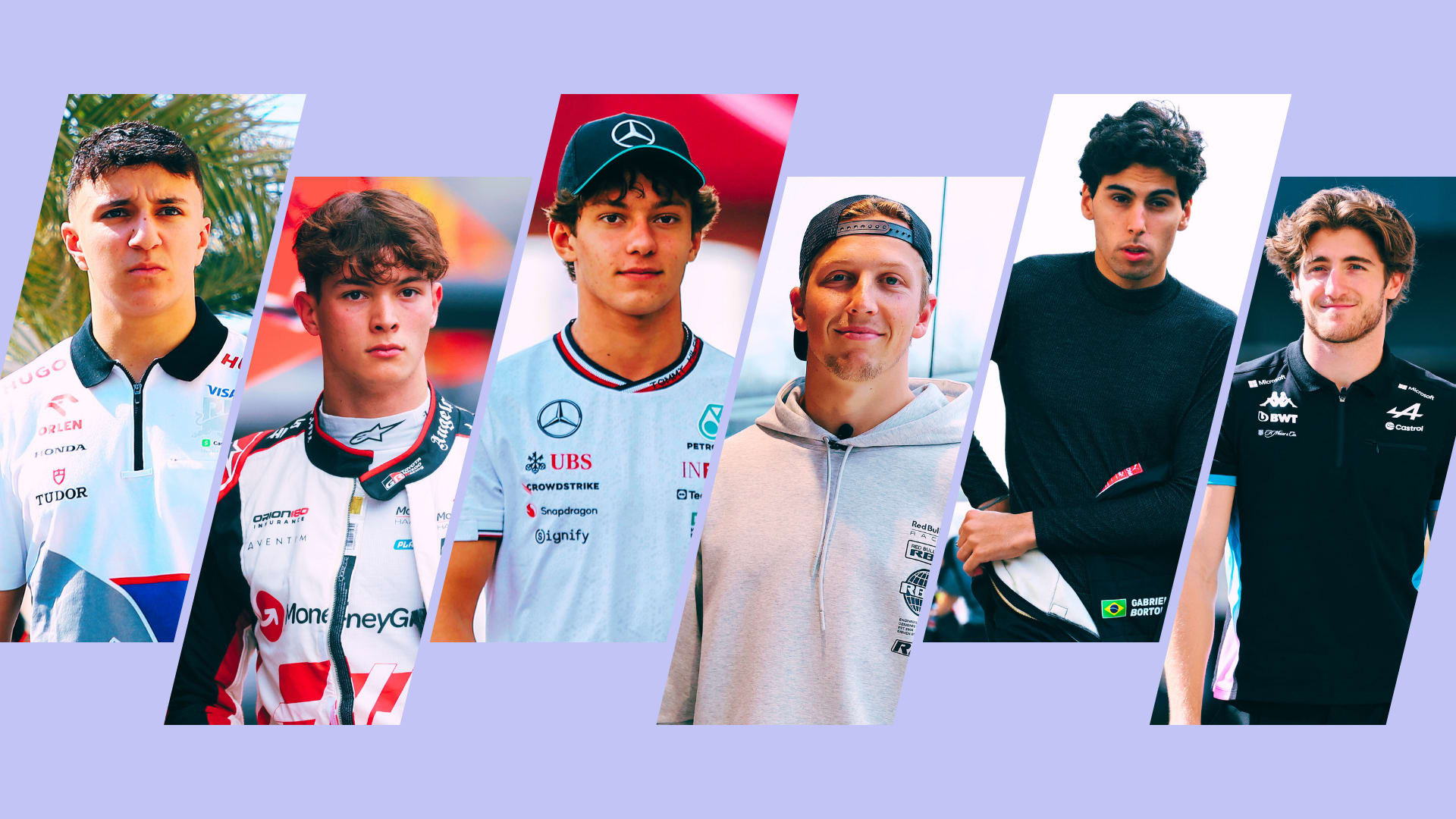Decoding The F1 Drivers Press Conference: A Comprehensive Guide

Table of Contents
Understanding the Format and Structure of an F1 Drivers Press Conference
The F1 Drivers Press Conference follows a fairly standard format, though variations can occur depending on the event and the number of drivers involved. Typically, it begins with opening remarks from an official, often a representative of the FIA or the circuit organizers. Then, the drivers are introduced, often taking their seats at a designated podium or table. The core of the conference is the Q&A session, where accredited journalists pose questions to the drivers. Finally, closing remarks bring the session to a close.
- Types of Questions Asked: Journalists' questions span a wide range, from the technical (tire strategy, car performance, aerodynamic updates) to the personal (driver's feelings about a race, their fitness regime), always keeping a professional tone. They may also delve into rivalries, team dynamics, and even the drivers' off-track lives (though usually within respectful boundaries).
- The Role of the FIA and Team PR: The FIA oversees the overall structure and ensures fairness. Meanwhile, team PR representatives often work behind the scenes, briefing drivers before the conference and sometimes subtly guiding responses to sensitive questions.
- Time Constraints and Pressure: Press conferences operate under strict time limits. Drivers and the media are under pressure to make the most of the allotted time, leading to sometimes rapid-fire questioning and concise answers.
- Team vs. Combined Press Conferences: Some press conferences are specific to a single team, allowing for more in-depth discussion of internal matters. Others are combined, featuring drivers from multiple teams, leading to more general questions and broader discussion points.
Decoding Driver Body Language and Communication Styles
While words hold significance, the unspoken communication in an F1 Drivers Press Conference is equally revealing. Subtle cues can betray a driver's true feelings, even when their verbal responses are carefully crafted.
- Subtle Cues: A furrowed brow might hint at frustration with a recent race outcome. A relaxed posture could suggest confidence, while fidgeting may indicate nervousness or uncertainty. The tone of voice – sharp, measured, or jovial – also speaks volumes.
- Humor and Deflection: Drivers often employ humor or carefully worded responses to deflect difficult questions or avoid revealing sensitive information. Learning to recognize these tactics is crucial to understanding their underlying message.
- Genuine Emotion vs. Crafted Responses: Differentiating between genuine emotion and carefully constructed responses is a key skill in decoding the F1 Drivers Press Conference. Experienced observers learn to identify when a driver is genuinely expressing their feelings and when they are employing a strategic communication technique.
- Understanding Driver Personalities: Understanding each driver's individual personality and communication style is essential to accurately interpreting their responses. A naturally reserved driver might offer concise answers, while an outgoing driver might be more expansive.
Identifying Key Themes and Narrative Arcs in F1 Drivers Press Conferences
The F1 Drivers Press Conference isn't just a collection of individual answers; it's a microcosm of the season's overarching narrative. By listening carefully, you can gain significant insights into the unfolding season.
- Race Performance and Upcoming Challenges: Drivers often use press conferences to analyze their recent race performance, highlight areas for improvement, and discuss strategies for upcoming challenges.
- Team Conflicts and Alliances: The dynamics between teammates and rival teams can often be discerned from their comments and interactions during press conferences. Subtle tensions or unexpected camaraderie can reveal a lot about the power plays within the sport.
- Rivals and Championship Standings: The drivers' comments about their rivals and the championship standings provide valuable clues about their strategic thinking and competitive mindset.
- Public Image Management: Drivers are acutely aware of their public image. Press conferences offer a platform to shape perceptions, manage narratives, and appeal to different audiences.
Utilizing Resources to Enhance Your Understanding of F1 Drivers Press Conferences
Several resources can significantly enhance your understanding and enjoyment of F1 Drivers Press Conferences.
- Official F1 Website and Team Websites: These are primary sources of information, often including official transcripts or summaries of press conferences.
- Dedicated F1 News Sources: Many reputable news outlets provide comprehensive coverage of F1, including analysis of press conferences and driver interviews.
- Live Streams and Transcripts: Websites and platforms like Formula1.com often provide live streams of press conferences and later release transcripts.
- Following F1 Journalists on Social Media: F1 journalists on platforms like Twitter offer real-time analysis, observations, and commentary, enriching your understanding.
Beyond the Surface: The Strategic Importance of F1 Drivers Press Conferences
The F1 Drivers Press Conference is far more than a simple Q&A session; it's a crucial strategic tool for drivers, teams, and the sport itself.
- Influencing Public Opinion: Drivers carefully craft their responses to influence public opinion, build support, and manage their image.
- Media Management and Narrative Shaping: Teams invest heavily in media management to shape the narratives surrounding their drivers and teams, using press conferences as a vital component.
- Sponsor Relationships and Team Image: Positive press conference performances can bolster sponsor relationships and enhance the team's overall image, attracting new fans and partnerships.
Mastering the Art of the F1 Drivers Press Conference
Understanding the nuances of the F1 Drivers Press Conference unlocks a deeper appreciation for the sport and its complexities. By analyzing body language, identifying key themes, and utilizing available resources, you can move beyond surface-level understanding to gain valuable insights into the strategies, rivalries, and personalities that drive Formula 1. Now that you have this comprehensive guide, delve deeper into the world of F1 Drivers Press Conferences and uncover the hidden stories behind the words! Become a more informed F1 fan by actively decoding the next F1 Drivers Press Conference!

Featured Posts
-
 Van Der Poels Custom Canyon Aeroad A Closer Look At His Tirreno Adriatico Machine
May 26, 2025
Van Der Poels Custom Canyon Aeroad A Closer Look At His Tirreno Adriatico Machine
May 26, 2025 -
 Palisades Fire Impact On Celebrity Homes A Comprehensive Overview
May 26, 2025
Palisades Fire Impact On Celebrity Homes A Comprehensive Overview
May 26, 2025 -
 Sinners A Louisiana Horror Film Arrives In Theaters Soon
May 26, 2025
Sinners A Louisiana Horror Film Arrives In Theaters Soon
May 26, 2025 -
 Rehoboth Beach Your Stress Free Escape
May 26, 2025
Rehoboth Beach Your Stress Free Escape
May 26, 2025 -
 Hells Angels Member Killed In Crash Funeral And Memorial Service
May 26, 2025
Hells Angels Member Killed In Crash Funeral And Memorial Service
May 26, 2025
